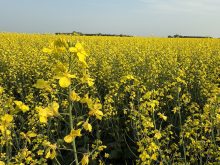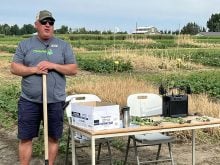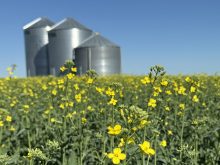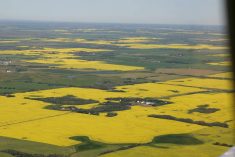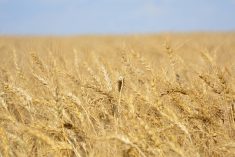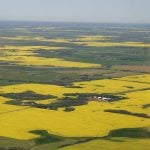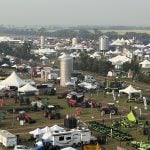It’s not nearly as famous as the large and unusual rock west of Okotoks, Alta., but Manitoba has its own glacial erratic, says nature writer Bill Stilwell.
Manitoba’s Medicine Rock, a massive boulder moved and deposited by glacial ice, is located southeast of Ste. Rose du Lac on the Alonsa Ridge.
“Since the last ice age, people have been travelling through (the area) to get onto the Alonsa Ridge, which runs from the northwest to the southeast,” said Stilwell, who lives in Neepawa, Man.
Read Also
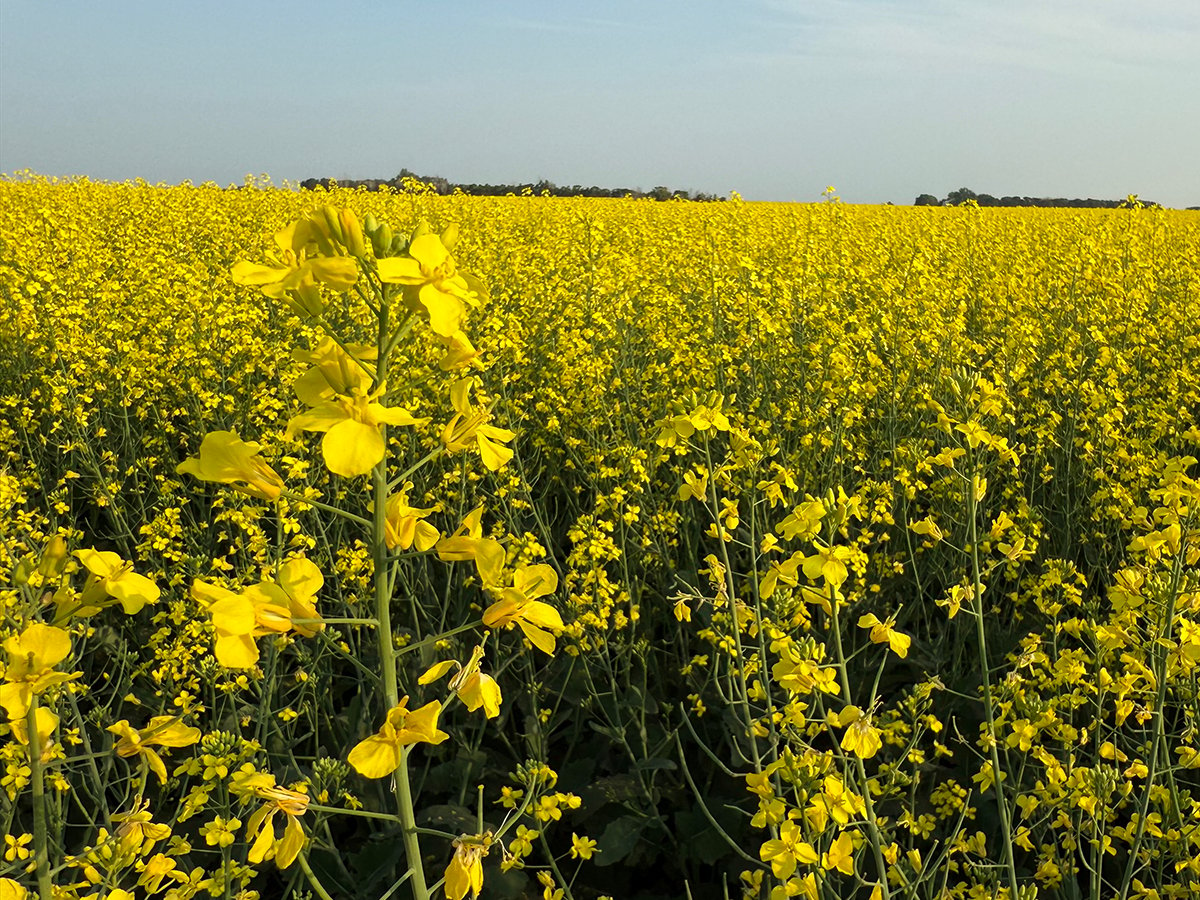
Canola council cuts field agronomy team
The Canola Council of Canada is cutting its agronomy team as part of a “refreshed strategic framework.”
“On their way they would stop at the rock and give offerings to their gods. So this place has got some special significance for First Nations people. You can go there and see that they’ve left tobacco and pieces of cloth.”
However, he said few Manitobans have heard of Medicine Rock, despite its cultural significance and the scenic views from the ridge.
“It’s at least of national significance, that spot. It’s beautiful and nobody knows about it.”
Stilwell hopes his new book,Manitoba Wild,will shine a spotlight on Medicine Rock and other natural gems in the province.
The book, his third on Manitoba’s natural beauty and wildlife, focuses on scenic drives that have specific focal points along the way.
He said a focal point could be an excellent location to view wildlife, a spot to look at distinct scenery or a place to walk down a nature trail. The book provides maps, directions and photos of scenery along each drive.
“From the perspective of informing the public of what gems we do have as far as natural history and scenic areas… he’s performing a valuable service,” said Cal Cuthbert of Ducks Unlimited Canada in Brandon.
However, Stilwell was careful to highlight spots off the beaten path because he wanted to promote authentic natural experiences.
He said the outdoors for many Canadians is about groomed grass, pristine boardwalks and mint-chocolate chip ice cream cones.
“(Nowadays), there’s a real environmental movement, which is good,” he said, but most people experience nature in an artificial way.
“They’re going to The Forks (in Winnipeg) or Riding Mountain National Park, where everything is canned and prepared for you.”
Instead, Stilwell believes the province’s natural areas can be preserved and protected if Manitobans and other tourists visit a few of the 60 spots listed inManitoba Wild.
“Why do I want to send them there? Well, hopefully they’ll develop an appreciation (for nature) and these places will be around for a long time.”
One of those places is Langruth, Man., on the west side of Lake Manitoba.
It is known as the bird watching capital of Manitoba and the drive in Stilwell’s book begins on the shore of Lake Manitoba at Big Point, one of the earliest Icelandic settlements in Canada.
“When you go to Big Point, stand there and shut your eyes…. You can sense the wet breeze coming off the lake and you’ll think you’re at the ocean,” Stilwell said.
“If you open your eyes and look around, you can see pelicans, seagulls and shore birds.”
Visitors who drive west from the lake cross ridges and other high ground, which offer an opportunity to see grouses, songbirds and other highland birds.
The drive ends at Big Grass Marsh, the site of Ducks Unlimited’s first wetlands restoration project in Canada.
“It’s one of my favourite places,” Stilwell said. “Once you get in there, it is a plethora of wildlife.”
Although his book concentrates on particular natural attractions, Stilwell said the journey to and from those sites is another way for urban residents to re-connect with rural communities.
“Go to our communities, go to our farms, see who we are, get a feel for where we live … and you’ll have a better appreciation of our rural culture.”





